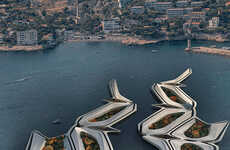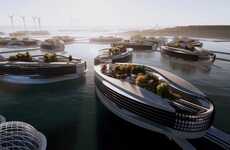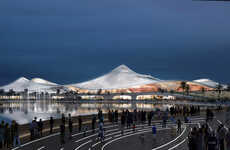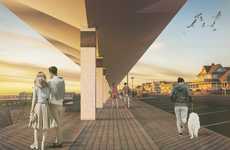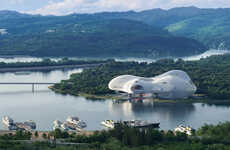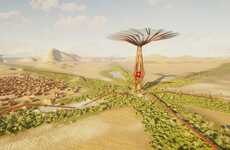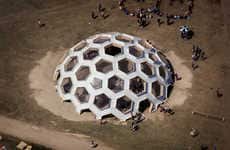
'City on the Sea' Imagines a Shanghai that Embraces Rising Shores
Amelia Roblin — July 27, 2012 — Art & Design
References: aaschool.ac.uk & suckerpunchdaily
The issue of how Earth's changing climate will affect the way that we build is a compelling one, and a problem explored though 'City on the Sea' by students of the Architectural Association Visiting School, Shanghai. Considering the relationship that the metropolis has with its bordering river, the designers explored one of H2O's most fascinating features.
Some representation of the meniscus was incorporated into the projects as a way to explore the concepts of tension and escalation and the threshold between land and waterway. One proposal encapsulates the urban environment in big domed bubbles to protect it while another dresses it in cloud-like ribbons. Undertaken beneath director Tom Verebes, the 'City on the Sea' exercise involved the impressive use of complex computer rendering programs to analyze the effects and impacts of Shanghai's liquid surrounds.
Some representation of the meniscus was incorporated into the projects as a way to explore the concepts of tension and escalation and the threshold between land and waterway. One proposal encapsulates the urban environment in big domed bubbles to protect it while another dresses it in cloud-like ribbons. Undertaken beneath director Tom Verebes, the 'City on the Sea' exercise involved the impressive use of complex computer rendering programs to analyze the effects and impacts of Shanghai's liquid surrounds.
Trend Themes
1. Watery Architecture - Embracing waterways and rising shores in urban architecture leads to new opportunities for innovative designs and safeguarding against natural disaster.
2. Climate-conscious Construction - Creative design solutions in architectural and engineering practices to combat the global climate crisis.
3. Computational Urbanism - Leveraging advanced computer rendering programs for analyzing impacts and effects on cities' evolving environments.
Industry Implications
1. Architecture and Planning - Architects, planners, and urban developers can integrate watery architecture, green space, and urban innovation into urban environments.
2. Environmental and Resilience Consulting - Environmental consultants, sustainability strategists, and resilience experts can apply climate-conscious construction designs and consult on creating flood resistant infrastructure.
3. Technology and Software - Advances in computational urbanism are driving more widespread adoption of advanced modeling and mapping technologies for the evolution and development of urban planning.
4.5
Score
Popularity
Activity
Freshness

